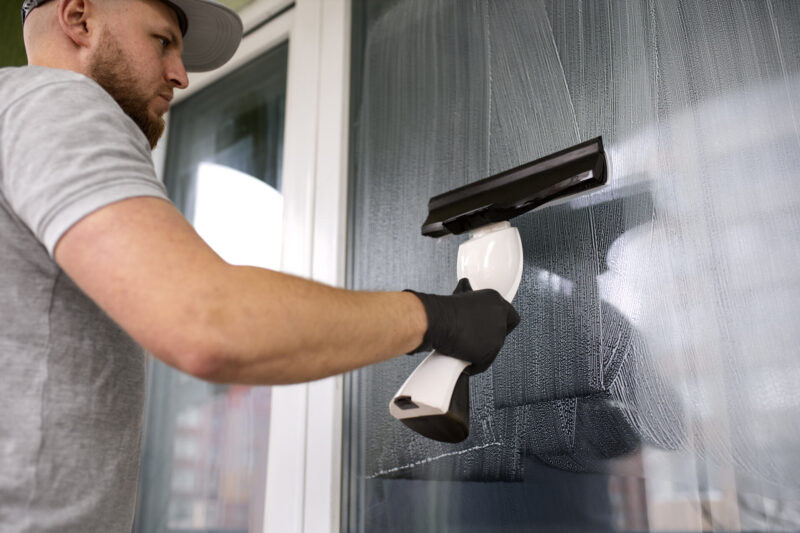How to Apply Tinting Film to Home Windows

Tinting your home’s windows offers a simple way to make your space more comfortable and energy-efficient. It cuts down on glare during movie nights, protects your furniture from fading, and helps lower energy bills. Whether you want more privacy or better sunlight control, applying window film is a straightforward project you can handle with the right tools and our guide. Still, if you ever need assistance, the team at Commercial Window Tinting is available to make the process easy and stress-free.
Step-by-step guide
Applying window tint to your home windows is easier than you might think. With the right tools and a little bit of time, you can give your windows a fresh, professional-looking finish. This step-by-step guide will walk you through the process so you can get great results without stress.
#1. Gather materials
Before you dive into tinting your windows, make sure you’ve got everything you need. Grabbing these tools upfront will save you a lot of hassle later:
- tinting film
- utility knife
- squeegee
- soap and water mix
- spray bottle
- tape measure
- microfiber cloth
Once you’ve got your gear ready, you’re set to start!
#2. Clean the window

Start by making sure your window is really clean. Any dirt or dust left behind can cause bubbles under the film. Spray the window with some soapy water and use a microfiber cloth to wipe it down. For a better result, you can use a professional glass cleaner like Windex or Invisible Glass instead of regular soap and water. Make sure to get every spot so the film goes on smoothly.
#3. Measure and cut the film
Now that the window is clean, it’s time to measure and cut the tinting film. Use a tape measure to get the exact size of your window. Cut the film about an inch larger than your window size to give yourself some extra room for adjustments. Once you’ve got it in place, you can trim the extra film off for a perfect fit.
If you’ve done this before or feel confident, you can cut the film to the exact size right from the start. Just make sure to use a sharp utility knife so the edges come out clean.
#4. Wet the window surface
Now, it’s time to prep the window for the film. Grab your spray bottle filled with a soap and water mix and spray the window until it’s completely covered. Make sure the glass is really wet. This helps the film glide smoothly over the surface and gives you some wiggle room to adjust it before it sticks.
#5. Apply the film
Now that the window is wet peel off the backing from the tinting film. Make sure the adhesive side doesn’t touch anything—it’ll pick up dirt fast. Start at the top of the window and place the film on the glass. Slowly move your way down, gently pressing the film as you go. The soapy water helps you move the film around until it’s in the right spot.
You can try using a heat gun on low heat. It softens the film, especially if you’re working on tricky shapes like curved windows. You can also get a second set of hands for larger windows—one person holds the top while the other works on aligning and smoothing the film.
#6. Smooth out the film
Now that the film is on the window start smoothing it out. Use a squeegee, starting in the middle of the window and working toward the edges. Press firmly to push out any air bubbles or extra water. Take your time here to make sure the film sticks without any bumps. If you spot a bubble that won’t go away, gently lift the edge of the film and press it back down while using the squeegee.
#7. Trim the excess film
Now that the film is smooth, it’s time to trim the extra. Use a sharp utility knife and carefully cut along the edges of the window. Keep the knife close to the window frame to get a straight and clean cut. Go slow so you don’t cut too much or leave any rough spots. After trimming, the window should look neat, almost like a pro did it.
Common mistakes to avoid
Here are some common mistakes to avoid when applying window tint, explained in a simpler way:
- Not cleaning the window enough. If dirt or dust is left on the window, it can cause bubbles or stop the film from sticking properly. Use a lint-free cloth and a mild cleaner like soap and water to get the window really clean.
- Using too much or too little water. You need just the right amount of water. Too much makes the film hard to control, and too little won’t let you move the film into place. Keep the window wet, but don’t soak it.
- Cutting the film the wrong size. If you cut the film too small or too big, it won’t fit right. Measure the window carefully and cut the film slightly larger to give yourself room to adjust.
- Getting bubbles under the film. Bubbles can show up if the film isn’t smoothed out properly or if dust is trapped. Start from the center and use a squeegee to push bubbles out to the edges.
By following these tips, you’ll get a clean and smooth finish on your windows.
When to call a professional
While applying window tint can be a fun project, there are good reasons to hire a professional instead. First, professionals know how to get a smooth, bubble-free finish, which can be tricky, especially with large or oddly shaped windows. They have the right tools and experience to avoid common problems like peeling or uneven edges. Second, professional installers usually offer warranties, so if something goes wrong, they’ll fix it. Finally, if you want a specific result, like blocking UV rays or keeping your home cooler, they can recommend the best commercial solar window film for your needs.
Hiring a Commercial Window Tinting can save you time and effort while giving you a polished finish.

Request Quote
Illuminate Your Space: Window Tinting Excellence Awaits. Request a Quote for Customized Solutions, Blending Style, Comfort, and Energy Efficiency. Transform Your Windows Today!